Using jet engines to move aircraft around airports isn’t very efficient – and this is what sustainable taxiing is about. Meet the “Taxibot”!
When we discuss aircraft (or engine) efficiency, we are normally referring to the cruise portion of the flight. Maybe the climb, too. And there’s a good reason for this since this is where the aircraft will burn most of its fuel. But as we’ve seen, there are many other steps in getting an aircraft to fly. And many of them involve burning fuel. One of these steps is taxiing, and in some airports, it can last 10 minutes or more.
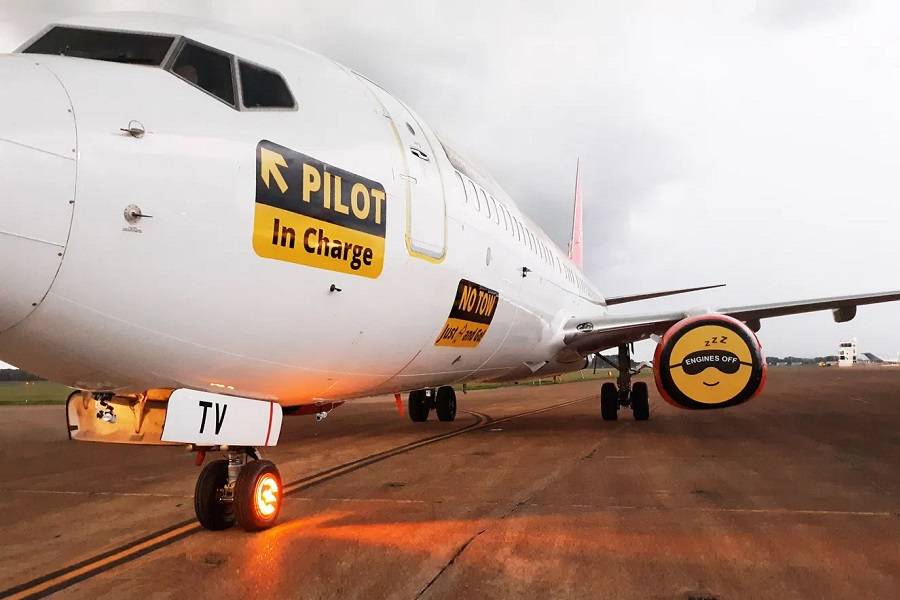
This is where sustainable taxiing comes in. We already saw an impressive initiative in this area, called WheelTug. In essence, it consists of two motors inside the hubs of the two nose wheels. The power for these motors comes from the aircraft’s auxiliary power unit (APU). Additionally, the system can include cameras near the nosewheel – but that’s to allow extra manoeuvres, as we saw.
The WheelTug is an on-board sustainable taxiing system, i.e. everything necessary to run it is on the aircraft. If all goes to plan, the system should get a 737 supplemental type certificate later this year. The A320 family will be next. Among the advantages of the WheelTug is the fact that there is no longer a need to couple/decouple a tug. This is a time-consuming part of the pushback process. Also, the WheelTug’s agility opens some new opportunities for parking.

Sustainable Taxiing – On-Board Or Not?
But this on-board system also has some disadvantages. The most obvious of these is weight. There are no batteries since the system uses the APU. However, the installation of the two electric motors adds about 120-150 kilos (265-330 lbs) to the aircraft. This is a substantial increase, particularly for long flights. Of course, a reduction in taxi fuel weight could help balance this, in some airports.
But the sustainable taxiing solution we are looking at here is not an on-board system. At first glance, the “Taxibot” looks like a pushback tug. But looks can be deceiving. The Taxibot has a driver, that controls it when it’s driving alone and when it pushes back a plane from the gate. But like the WheelTug, it’s actually the aircraft pilot that controls it, once it’s away from the gate!
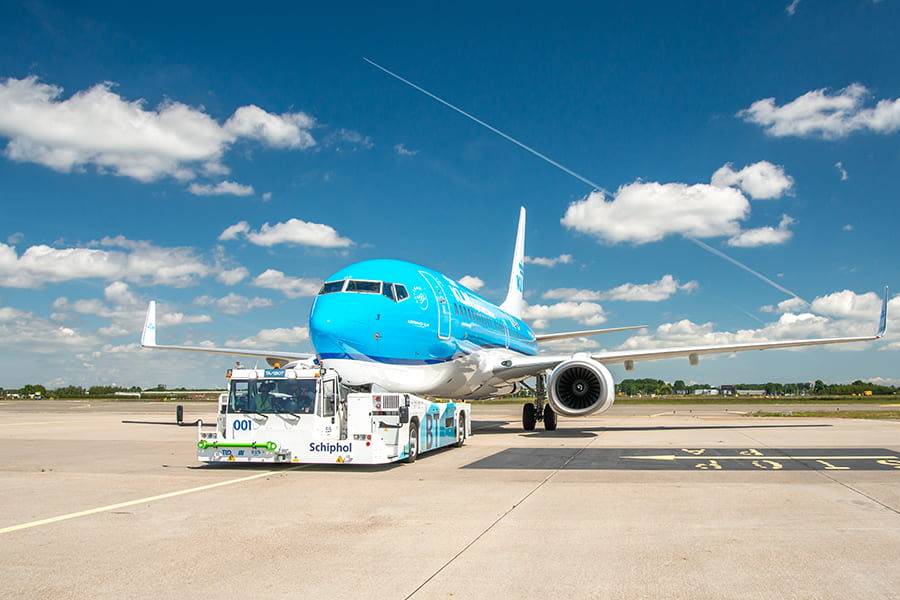
The Taxibot allows pilots to steer, using the tiller in the cockpit. That sets it apart from normal pushback tugs; these require steering to be disconnected. For forward motion, the Taxibot operates like a car with an automatic gearbox. It will accelerate slowly, and the pilots can use the aircraft’s own brakes, to control its speed. Its maximum speed is 22 knots. And this makes it the fastest sustainable taxiing solution since the WheelTug can only do 8 knots.
The use of the aircraft’s own brakes is key here. Normal pushback tugs can also tow planes around airports. But generally speaking, they don’t do so for big distances, if the planes are at take-off weight. This is because the tug’s own brakes can pose stresses on the nose gear leg. By relying on pilot control and the aircraft’s own brakes, the Taxibot can achieve its 22-knot top speed safely.
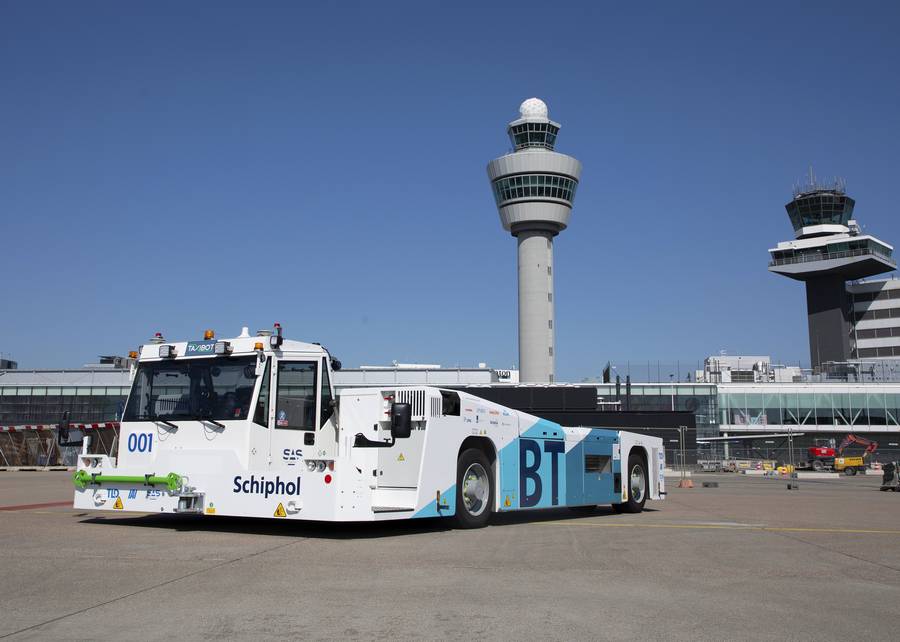
The Docking/Undocking Issue
Operationally, the Taxibot has its own disadvantages. Sustainable taxiing means taking aircraft close to the runway and then releasing them. This docking/undocking process takes some time. And when many planes are taxiing with such vehicles at the same airport, at the same time, this has some implications with regards to congestion.
Not all airports will have the necessary access roads and suitable spaces for docking and undocking. Amsterdam’s Schiphol airport (EHAM) in the Netherlands conducted its own sustainable taxiing trial in 2020, using one Taxibot. For docking and undocking near runways, the trial used old de-icing stands.
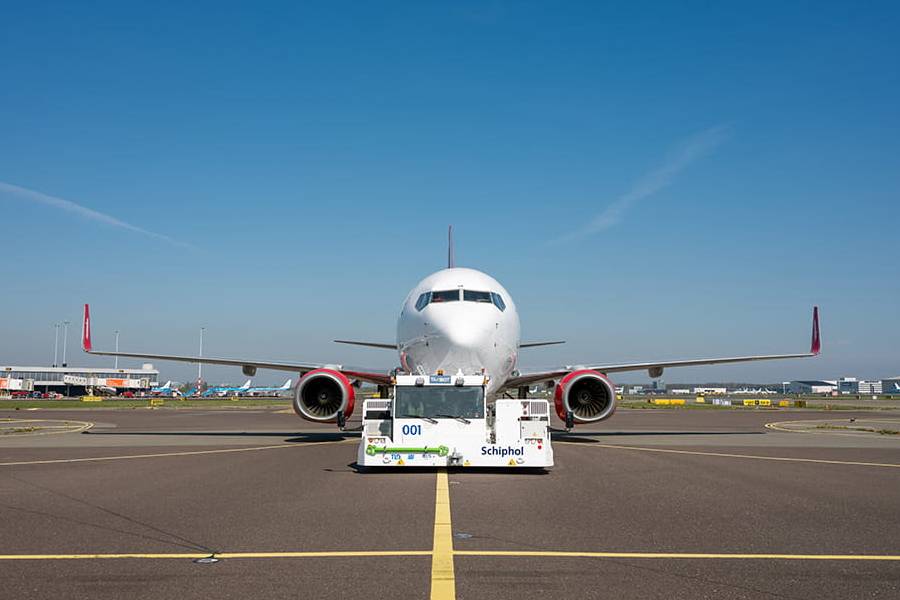
But that trial took place at the height of the pandemic, when the airport was empty. For sustainable taxiing to work in scale, all aircraft need to be able to get around the airport, without getting in each other’s way. Also, even though this system doesn’t need any power from the plane, the aircraft would likely still need to run the APU. And of course, aircraft need time to start and warm up their engines, before they can depart. So aircraft will still need to do some taxiing using their jet engines.
Schiphol airport aims to embrace sustainable taxiing, becoming a “Tow-Only Airport”. But this will take more time, to become a reality. For now, the Taxibot works only with A320-family aircraft and 737NGs. According to the airport’s authorities, it hasn’t been cleared to operate on the 737 MAX yet. But this still covers a good proportion of the airport’s traffic. Schiphol has now ordered a second Taxibot.
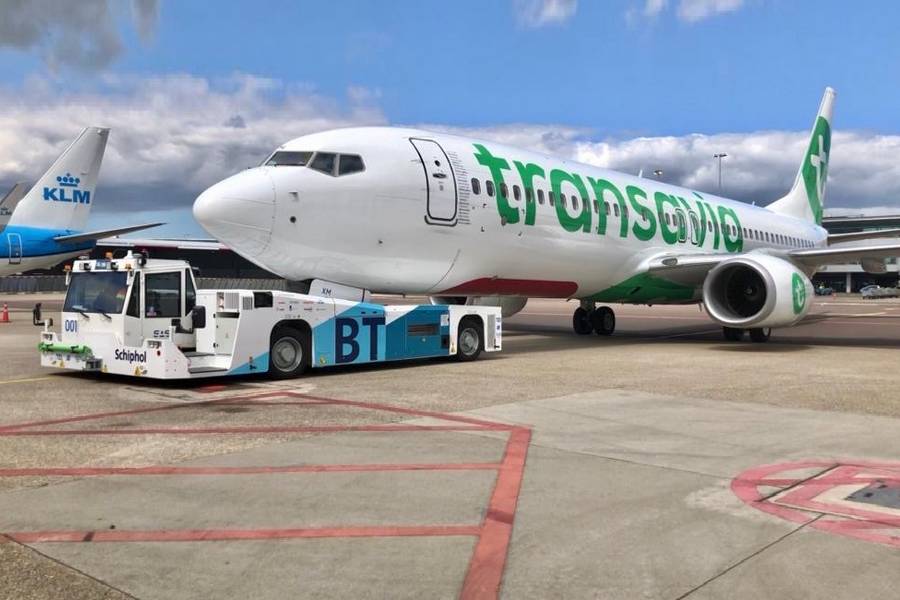
Sustainable Taxiing – Making A Choice?
Ultimately, Schiphol would like to see an automated form of sustainable taxiing. This would also help reduce taxiing errors. Plus, it would reduce ground radio traffic. Schiphol airport is quite spread out, requiring prolonged taxiing. So it is definitely a good choice for such a program. But with different ideas about how to approach this issue, it’s difficult to see what’s best.
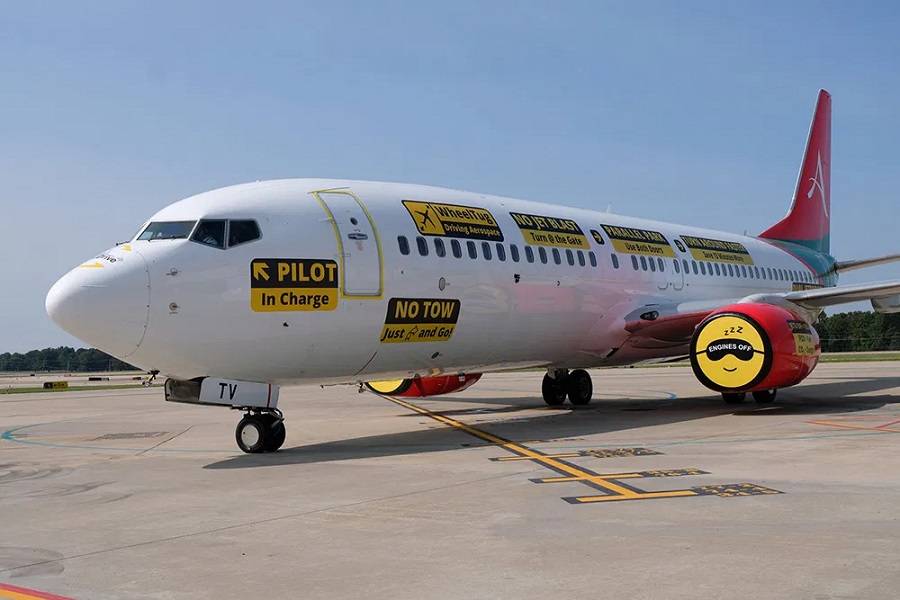
There are airlines that have already committed to installing the on-board WheelTug on their 737s or A320s. On the other hand, the Taxibot is really an airport-specific solution to sustainable taxiing. With its slow speed, the WheelTug isn’t really intended as a full “gate-to-runway” solution. But as we’ve seen, it could still work well in many situations, like getting aircraft to de-icing stands.
Most importantly, this is an area where existing technology can already provide working solutions. Schiphol calculates that sustainable taxiing with the Taxibot saves 95% of fuel per taxiing minute. And the system could save 4-9% of fuel during flight, by reducing the amount of taxi fuel on board! The savings there depend on the flight’s duration; savings are higher for shorter flights.
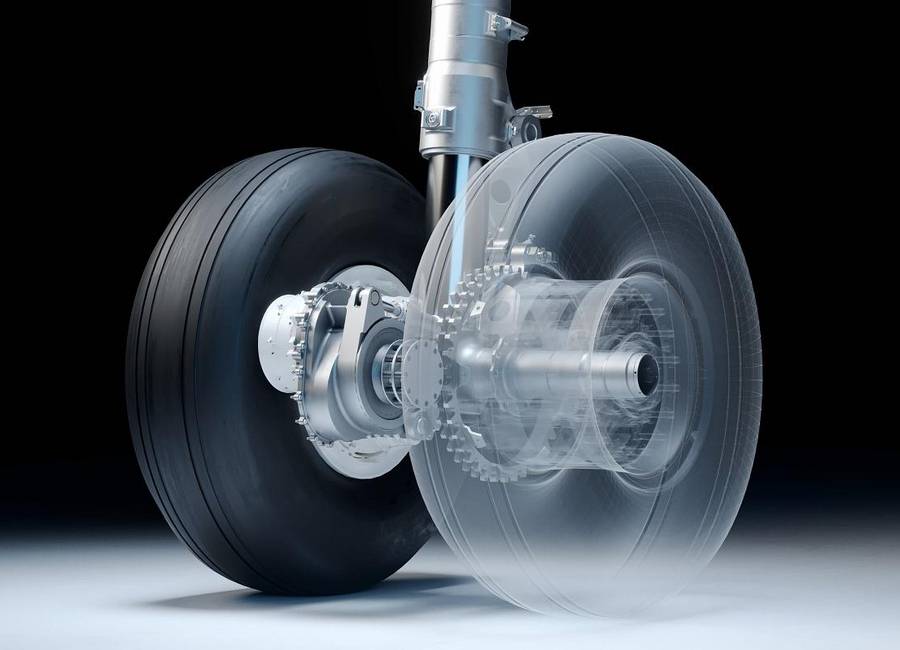
So, which system will prevail? The on-board WheelTug has a certain… elegant simplicity since it needs little from airports. Safran, the company making the landing gear for many Airbus aircraft, has been working on another on-board system. This one “sits” in the main gear, replacing brakes. But it isn’t clear if Safran is developing this as a retrofit, or for future aircraft.
Only time will tell which way the industry will go. But if its developers adapt it to more aircraft types, the Taxibot could be the easiest system to implement widely.




1 comment
dirk
In my opinion, the Taxibot has the most promise. The amount of energy needed to tow a plane over larger distances can be better stored on a larger device or vehicle.
One could even think about a railsystem underground like a train overhead line. It could run until an aircraft reaches the runway.